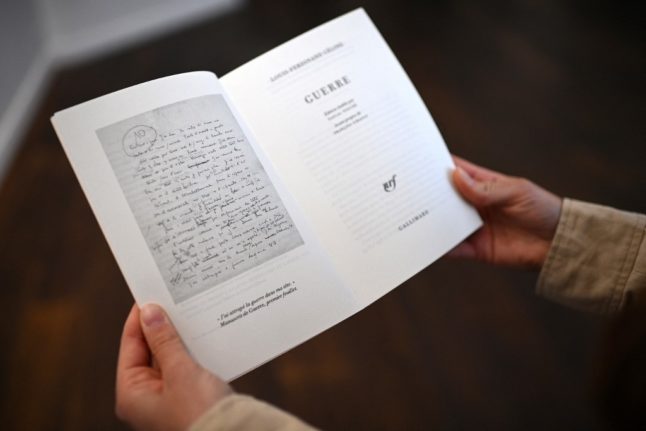The “Millennium” crime trilogy by the late Swedish author Stieg Larsson has become a cult hit worldwide, selling more than 10 million copies, and the first novel’s long-awaited movie adaptation hits screens Friday.
The books have become a phenomenon in Sweden and abroad, translated into more than 30 languages. Their popularity is a striking contrast to their author’s tragic fate.
Larsson, who worked as a journalist in Stockholm, did not live to enjoy the sensational success; he died in November 2004 of a heart attack, aged 50, a year before the trilogy was published.
The film opening in Swedish and Danish movie theatres Friday is based on the first book, “The Girl With the Dragon Tattoo.”
It follows Mikael Blomkvist, an investigative reporter, and Lisbeth Salander, a feisty rebel hacker-turned-detective, as they search for Harriet Vanger, the niece of a business tycoon who disappeared at the age of 16 four decades earlier in northern Sweden.
In Sweden alone, a country of nine million people, three million copies of the books have been sold. In France, 2.5 million have flown off shelves, while a million copies have been sold in both Spain and Italy.
The city of Stockholm has even picked up on their popularity, offering walking tours pointing out locations mentioned in the book, such as Blomkvist’s favourite pub, his apartment building on Bellmansgatan, and Salander’s favourite watering hole, the classic beer hall Kvarnen.
Fans of the books have been eagerly awaiting the film version, directed by acclaimed Danish movie maker Niels Arden Oplev.
Shot in Stockholm, the film casts Swedish star Michael Nyqvist in the role of Blomkvist, who effortlessly tumbles into violent mysteries and intrigues, while Salander is brought to life by virtually unknown actress Noomi Rapace.
Swedish media have unanimously hailed the muscular, raven-haired Rapace, covered in piercings and a large dragon tattoo on her back for the shoot, for her convincing performance, especially in the most violent scenes including one in which she is brutally raped.
Some critics have said Rapace is physically too big and muscular to faithfully play Salander, described in the trilogy as a small, androgynous girl who is so skinny she looks anorexic.
After seeing an early screening of the nearly two-and-a-half-hour-long movie, however, most viewers said the physical differences were easily forgotten thanks to Rapace’s convincing performance.
The film focuses fully on the Blomkvist-Salander duo, leaving out a number of other memorable characters from the book, including members of the Vanger family.
“The film works well … It’s much better than I thought it would be,” Swedish freelance journalist Jonna Karvonen told AFP.
“I am pleased, because usually the film is not as good as the book.”
Even Stieg Larsson’s family, which signed away the movie rights for an undisclosed sum, was impressed.
“Noomi Rapace is outstanding as Lisbeth Salander,” his brother Joakim raved.
Some readers may be disappointed by the small portion of the film devoted to the book’s other main female character, the journalist Erika who is also Blomkvist’s lover.
“We are of course disappointed we can’t follow that (relationship) … We had to focus on the relationship between Mikael and Lisbeth,” Nyqvist told AFP in an interview.
But, he said, that storyline will be developed in the made-for-television version of the trilogy, noting the constraints placed on the film adaptation.
“If you would have everything in it would have been an extremely bad film,” he said.
The movie, shot like a Hollywood thriller but with Sweden’s icy winter landscapes as a backdrop, is due out in Norway on March 13, in Finland on March 27 and in France on May 13, where it will open the Cannes film festival.
It is also expected to hit the big screen in Belgium and the Netherlands soon.
For the Swedish release, the production company Yellowbird said it expected 16,000 ticket sales for Friday, and 25,000 for the opening weekend, which would make it the most successful opening for a Swedish film.
The €11 million ($14 million) project consists of one feature film based on the first book and six television films based on the trilogy, said Yellowbird spokesman Erik Hultkvist.
By the AFP’s Delphine Touitou



 Please whitelist us to continue reading.
Please whitelist us to continue reading.